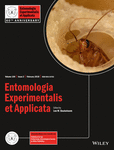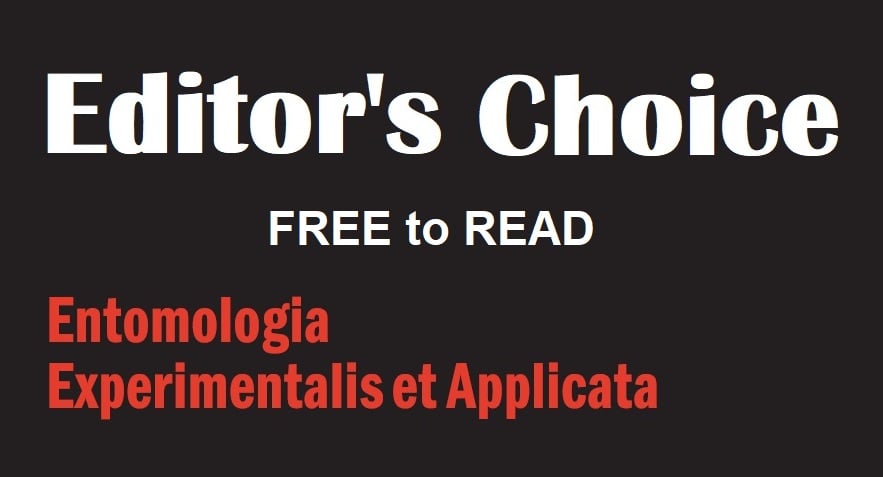Entomologia Experimentalis et Applicata
Journal list menu
Export Citations
Download PDFs
Issue Information
Special Section: Chemical and light attraction
Rye bread and synthetic bread odorants – effective trap bait and lure for German cockroaches
- Pages: 81-93
- First Published: 28 November 2017
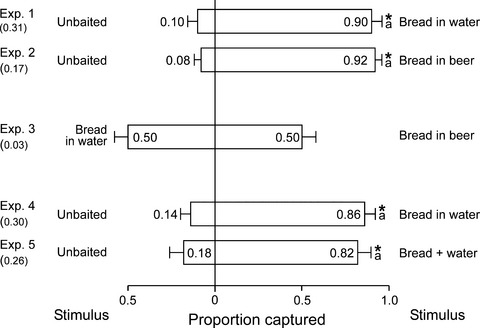
In large-arena laboratory experiments, traps baited with rye bread attracted German cockroaches (GCRs). Neither beer nor water enhanced the attractiveness of bread. All rye bread odorants were identified by gas chromatography-mass spectrometry. Synthetic rye bread odorants and other known bread odorants were then assembled into a Master Blend (MB). This MB lure proved attractive to GCRs and may eventually replace bread as a trap bait, but the minimum number of essential odorants for that lure has yet to be determined.
Suppression of female melon fly, Zeugodacus cucurbitae, with cue-lure and fipronil bait stations through horizontal insecticide transfer
- Pages: 94-101
- First Published: February 2018
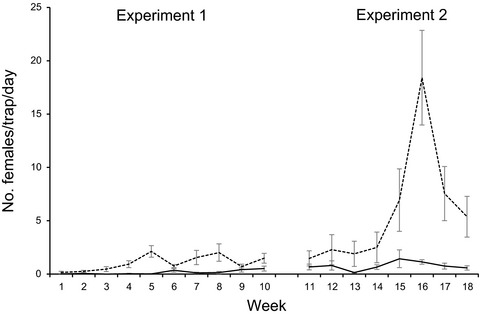
‘Male annihilation’ uses lures that attract male fruit flies to baits containing insecticides. The males ingest the insecticide and die, leading to suppression of the pest population. In a field study, ingestion of fipronil by male melon flies, Zeugodacus cucurbitae (Diptera: Tephritidae), led to reduced numbers of females. One mechanism for female mortality without direct exposure to the insecticide is through horizontal transfer of insecticide, after the females ingest regurgitant produced by males that have fed on fipronil.
The photokinesis of oriental fruit flies, Bactrocera dorsalis, to LED lights of various wavelengths
- Pages: 102-112
- First Published: 07 March 2018
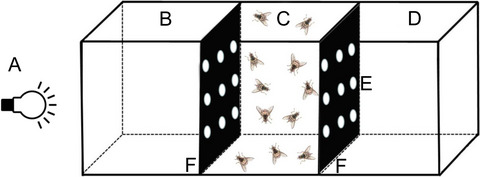
Light traps offer a potential means for monitoring and management of oriental fruit fly, Bactrocera dorsalis (Diptera: Tephritidae), an invasive pest of orchards around the world, including China. This study investigated the sensitivity of the fly to light and the impact of monochromatic light. Adult flies showed strong phototactic behavior toward green LED light. Positive phototaxis increased with age, and males were more sensitive than females. Nighttime illumination with green LEDs significantly decreased the lifespan of adult flies.
Visual orientation of the black fungus gnat, Bradysia difformis, explored using LEDs
- Pages: 113-123
- First Published: 01 March 2018
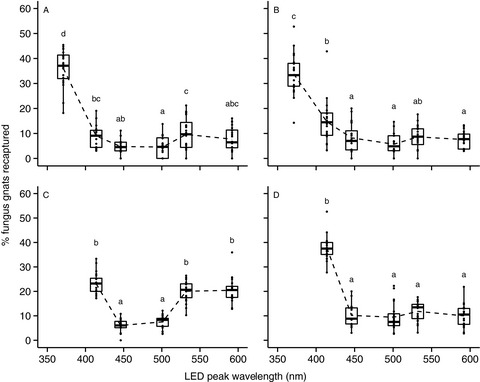
We studied the visual orientation of Bradysia difformis (Diptera: Sciaridae) with light-emitting diodes (LEDs) in a broad range of wavelengths in consecutive choice experiments in daylight and darkness. Bradysia difformis displays two, probably wavelength-specific, behaviors to UV radiation and green-yellow light, with UV being the most attractive stimulus. These behaviors might be directly related to underlying photoreceptors, suggesting dichromatic vision.
Original Articles
Limb ablation and regeneration in Harmonia axyridis: costs for regenerators, but benefits for their progeny
- Pages: 124-130
- First Published: 23 February 2018
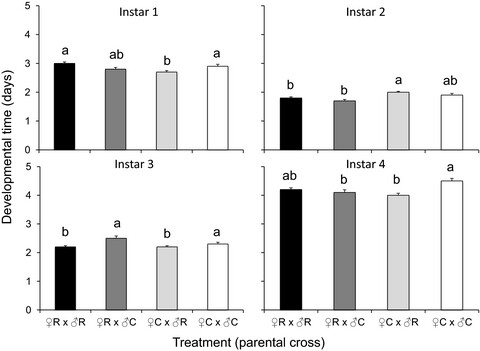
Harmonia axyridis (Coleoptera: Coccinellidae) in China are capable of regenerating a forelimb during pupation. In this study, we tested a population invasive in North America and found that virtually all beetles surviving the operation regenerated the limb. Compared to controls, ablated/regenerated beetles spent longer in pupation, and emerging females were smaller, but their reproductive performance was similar. Offspring of crosses that included a regenerated parent had faster larval development and daughters were heavier at emergence.
Insecticidal potential of Bacillus thuringiensis for the biological control of neotropical brown stink bug
- Pages: 131-138
- First Published: 22 February 2018
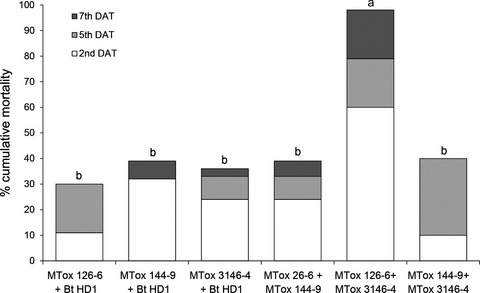
Euschistus heros (Hemiptera: Pentatomidae) is a major pest in Brazilian soybean production. In an attempt to control this stink bug, we evaluate the effects of exposure to Cry proteins of Bacillus thuringiensis. All treatments caused significant mortality of E. heros, in particular when isolates of Bt-toxins were combined (>98% mortality). The results demonstrate that E. heros is susceptible to Bt toxins, which may contribute to the management of this insect in soybean agro-ecosystems.
Suitability of brachiaria grass as a trap crop for management of Chilo partellus
- Pages: 139-148
- First Published: 06 March 2018
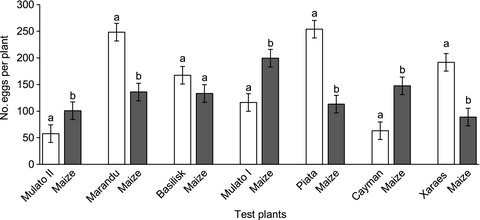
With the aim of optimizing a trap cropping strategy in the management of the cereal stemborer Chilo partellus (Lepidoptera: Crambidae), we evaluated its oviposition preference and suitability for larval survival on brachiaria grasses. We observed preferential oviposition on brachiaria over maize and negative effects of brachiaria on subsequent larval survival and development. These findings support the use of brachiaria in management of this pest through a push–pull strategy, based on the innovative concept of trap cropping.




